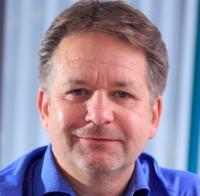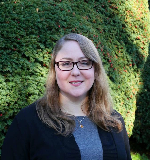Blog
Unless otherwise stated, content is shared under CC-BY-NC Licence
Celebrating WDPD2023 at the Nelson Mandela Foundation
This video was sent to us by Zandile Myeka, Metadata and Photographs Archivist at the Nelson Mandela Foundation, in celebration of World Digital Preservation Day 2023.
Digital preservation in interesting times
Mark Schroeder is a solution architect in Iron Mountain's Digital Business Unit
We are living in most interesting times…
(Joseph Chamberlain, 1898)

When the collapse of the Soviet Bloc precipitated the breakdown of the German Democratic republic in 1989, the East German Secret Service (Ministerium für Staatsicherheit - Stasi), found themselves holding extensive archives of records. In the forty years of its existence, 91,000 employees of the Stasi and up to 180,000 informants had amassed thousands of linear metres of archive material.
Graveyards and ghosts in web archiving
Alice Austin is the Web Archivist for the University of Edinburgh.
October 1969 was a busy month. Monty Python’s Flying Circus aired for the first time; Steve McQueen, Trey Parker and PJ Harvey were born; and on a dark, dark night (or about 10.30pm on the 29th), a 21-year-old UCLA student called Charley Kline started to transmit a message to the Stanford Research Institute using the Advanced Research Projects Agency Network. He meant to send the word ‘LOGIN’ – but the receiving system crashed at ‘LO’. And thus, the internet was born.
“So I’ve finally procured a digital preservation system, now what?”: Takeaways from DPC Supporter panel
Jenny Mitcham is Head of Good Practice and Standards at the Digital Preservation Coalition
Last month the DPC hosted a series of ‘Digital Preservation Futures’ events designed to showcase the work of our Supporter organizations. The event that kicked off this series was a panel discussion entitled “So I’ve finally procured a digital preservation system, now what?”. The session began with a representative from each Supporter organization giving a short lightning talk in answer to the question posed in the title, and this was followed by a lively discussion and Q&A with the audience. It worked well to benefit from the expertise of all of our Supporters together and in many cases to hear them effectively ‘singing from the same hymn sheet’ and repeating and developing on the points that others had made. With representatives from Arkivum, Artefactual, AVP, boxxe, Libnova, Preservica, and consultant Simon Wilson, this really did feel like ‘a concerted effort’. Pulling together the key learnings from the session into a blog post for World Digital Preservation Day seemed an obvious next step.
Bit List 2023: If digital preservation is possible then data loss is a choice
William Kilbride is Executive Director of the Digital Preservation Coalition
Digits are born vulnerable.
Every single byte of data depends on a global infrastructure of technology, process and people for its meaning and purpose to be realized. Much data serves the moment: it is quickly forgotten in a continuous flow of process and interaction. Other data serve lengthier purposes, as evidence and outputs of transactions that have significant impacts and long duration, longer than the infrastructure and the institutions through which the data was created. Everything in the latter category falls into the scope of digital preservation—the series of managed activities necessary to ensure continued access to digital materials for as long as necessary, beyond the limits of media degradation, technical obsolescence, and organizational change.
The Bit List is not a paper exercise. It was originally conceived as a call to action based on the insight and authentic voice of the global digital preservation community, and it remains so.
World Digital Preservation Day 2023: A Concerted Effort from Autocar & Exact Editions
Ellie Burnage works for Exact Editions based in the UK
“No one can whistle a symphony. It takes a whole orchestra to play it!” Halford E. Luccock 🎼
November has crept around again, and with it World Digital Preservation Day 2023 on Thursday 2nd November. Organised by the Digital Preservation Coalition, this annual celebration invites all data creators, archivists and curators to celebrate the benefits and opportunities enabled by the hard work of digital preservation community.
The theme of this year’s celebration is ‘Digital Preservation: A Concerted Effort’ — and a particular project Exact Editions took on during the last year encapsulates the collaborative work that digitising a magazine archive entails. Haymarket documented over 120 years of automotive history when they extended the archive of Autocar, the world’s oldest car publication, back to the first issue ever published in 1895.
World Digital Preservation Day 2023: Digital Preservation: A Concerted Effort
This blogpost has been written by St George’s, University of London (SGUL) Records Manager Kirsten Hylan, Research Data Support Manager Sarah Stewart, and Archivist Juulia Ahvensalmi.
‘Digital Preservation: A Concerted Effort’ is the theme of this year’s World Digital Preservation Day, celebrating how, by working with colleagues at our university and beyond, digital preservation allows us to both share and gain knowledge, which in turn supports our efforts at digitally preserving our digital records.
Digital Preservation Evolution: Navigating Changing Communities and Collaboration
Jon Tilbury is Chief Innovation Officer at Preservica
In the evolving realm of Digital Preservation, success hinges on collaboration. However, the dynamics of working together, exchanging knowledge and providing mutual support have seen significant transformations over the last few decades.
Since the late 20th century when Digital Preservation emerged as a distinct field, those engaged in it have recognized the importance of tackling its challenges through collaboration within a broader community. However, over that time the nature of those involved and the way information is exchanged around the community have fundamentally changed, and there are multiple communities with different problems and priorities. How do they support each other as Digital Preservation expands and evolves?
Digital Preservation for 5 Year Olds
This blog post has been written by Francesca Mackenzie, Digital Archivist specialising in file formats for the The National Archives (UK) and Jonathan Isip, Assistant Professor at the University of the Philippines School of Library and Information Studies (UPSLIS).
From our own experience starting out in the field of Digital Preservation, and conversations with each other on the subject we had found a recurring theme that the technical jargon can be off putting and often create a sense that the job is more complex than it is. Often glossaries can be quite daunting, so the goal of Digital Preservation for 5 Year Olds was to lower some of the language barriers of entry that maybe didn’t need to really be there in the first place.
Working across communities to ensure an open future for books: views from Copim's Archiving & Preservation team
Dr Miranda Barnes is Research Associate in Archiving & Preserving Open Access Books at Loughborough University
The Open Book Futures project, which began in May 2023 as an acceleration and advancement of the COPIM Project (11/2019-04/2023), continues to focus on the open access monograph, with an emphasis on Scaling Small. This principle “eschews standard approaches to organisational growth that tend to flatten community diversity through economies of scale” (Adema & Moore, 2021). Work Packages in both projects focus more broadly on infrastructure, governance, accessibility, financial models and revenue, metadata and dissemination, and experimental publishing, but also archiving and preservation. It is the combined approach and multifaceted, collaborative interaction of the work packages that leads to our best insights and outputs.
















































































































































